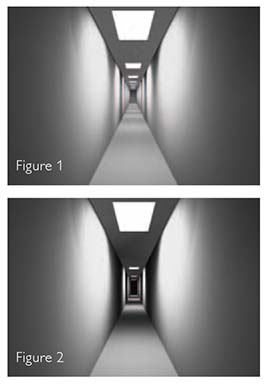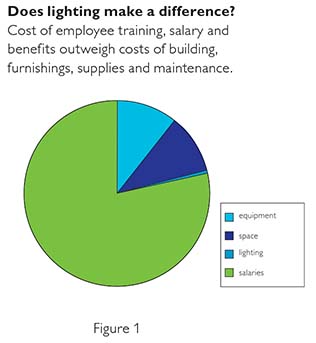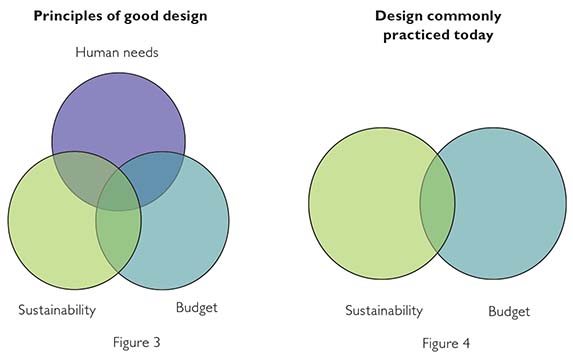- No products in the cart.
Professional lighting design improves people’s lives.
Philips Lightolier has always been focused on Lighting that Makes a Difference in people’s lives. In today’s challenging energy and environmentally conscience times, we must still give the appropriate attention to human needs. Care must be taken not to sacrifice the human experience in an effort to go “green” by saving energy at the lowest cost possible.
A perfect example of this scenario played itself out recently at a prominent Canadian university. The university had hired designers to light a corridor. This was accomplished by installing 2×4 K12 flat-lensed troffers spaced at 12 ft with a total light level of roughly 400lux. In an effort to “green” the school by cutting down on what was perceived to be an excessive amount of light, (IES recommends roughly 100lux down a corridor) the university instructed the maintenance department to remove the connection from every other luminaire. While this cut down on light and saved energy costs, it also created an uneven and high contrast lighted area. Soon, staff and students that used the corridor began to complain of headaches and sore eyes, since the human eye is not accustomed to rapid light adaptation while moving through a lighted space. (This is especially true the older we get.) The result is lowered productivity, poorer test scores and an overall unhappy environment.
What could they have done differently?
In good practice, the university should have first considered the needs of the people who use the building, then the environment and then budget. Why? Consider the cost of an office lighting system. As you can see in figure 2, such a system actually accounts for less than 2% (sources IES RP 01 04) when compared to all other employee related costs. It should also be noted that providing quality lighting with dimming control can actually help people sustain on tasks over longer periods of time and improve concentration. This drives up performance, improves efficiencies and results in excellent ROI (Return on Investment) due to higher productivity. (Figure 3).
As we have seen, all too often corners are cut when attempting to lower costs. Sure, some may realize a 25% decrease in energy costs, but when human compromise is factored in, the big picture costs may actually be increasing. This is especially true in the world of lighting. Designers must strive to provide high quality, task-specific lighting systems that can help clients realize ROI on a human friendly scale. The right lighting can work wonders.



